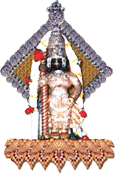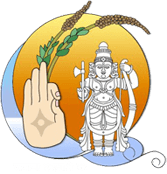– by Neria Harish Hebbar, MD
Darshana texts are also called Veda Upangas. There are six schools of philosophy based on the Vedas. They are in the form of short aphorisms and a Rishi is credited with having written each philosophy. Gautama’s Nyaya, Kanada’s Vaisheshika, Kapila’s Sankhya, Patanjali’s yoga, Jaimini’s Purva Mimamsa and Badarayana’s Vedanta-Sutra, (also called as Brahma Sutra or Uttara Mimamsa) are the six doctrines. These are collectively called as Shad-darshana. Nyaya and Vaisheshika literatures together are also classified under the sub heading Tarka Shastra. While Agama literature is theological, the Darshana literature is philosophical and logical. The Ithihasa (Ramayana and Mahabharata) and Puranas are for the masses appealing to their hearts whereas the Darshanas are for the scholars appealing to their intellects.
Darshanas are basically six systems of salvation. All six are equally valid ways of salvation and are divided into three groups of two each and are thought to be complimentary to each other. These are Nyaya and Vaisesika; Sankhya and Yoga and Mimamsa and Vedanta. Some of these doctrines form the foundation for Jainism and Buddhism. The purpose of all these six philosophical systems is the removal of ignorance and providing assistance to the student in acquiring knowledge that will lead to attainment of perfection and bliss. The Jivatman has to be united with Paramatman and this is immortality.
Nyaya and Vaisheshika:
Nyaya: (analysis) is the system of reasoning and logic. The sutras (aphorisms) are attributed to Aksapada Gautama. It argues that logic and clear thinking are essential means to higher bliss. It encourages the science of debate and discussion be it logic, metaphysics, psychology or theology.
Vaisheshika is the school of individual characteristics. The sutras, attributed to Uluka Kanada, postulate that nature is atomic and based its argument on physics rather than theology. The atoms are distinct from the soul, of which they are the instruments. It recognizes four distinct substances as non-atomic and these are Time, Space, Soul and Mind–collectively called Dravyas. There however is a dualism of matter and soul and it is this recognition of the atomic nature of the universe and its difference from the soul that paves the road to salvation. Along with Nyaya, Vaisheshika explores the significance of time, space, matter, cause, mind, soul and knowledge and give the result in the form of a theory of the universe.
Sankhya and Yoga:
Sankhya (count) was founded by the ancient sage Kapila and is the oldest of all the six systems. It also exhibits rigid dualism and fundamental atheism. Purusha (soul) and Prakrti (matter, nature) are not interdependent. It teaches existence of twenty-five basic principles (tattva), the first of which is Prakrti and the last is the Purusa. From Prakrti develops intelligence (buddhi) and self-consciousness (ahankara). Other senses like touch, hearing, taste, smell and sight are derived from self-consciousness. It discounts the theory of creation by a supreme God. Creation produced by Prakriti will occur independently and there is no need for a Creator with a Superintending Power. Sankhya system supports the theory of evolution and involution. Nothing can be entirely destroyed and there cannot be production of something out of nothing. Another important feature of Sankhya is the doctrine of three qualities or forces (guna), namely virtue (sattva), passion (rajas) and inertia (tamas). When there is equilibrium of the three gunas, the cosmic matter is said to be still undeveloped. When the universe matures, any one of these three qualities may show preponderance. The goal of the human being is to separate himself from matter and release from this bondage to attain salvation. Sri Krishna makes several references to the gunas and the Sankhya literature in his sermon to Arjuna in the rendition of Bhagavad-Gita.
Yoga is translated as spiritual discipline. It emphasizes psychic training to attain salvation. The basic text of yoga is the yoga sutra of Patanjali (2nd century B.C.E.). It differs from school of Sankhya in that it brings a deity, namely Ishvara to the picture. This God of Yoga is also symbolized in the sacred syllable OM (or Aum), which gave sublime purity of the soul and thus aided in meditation. The training of Yogi is divided into eight stages (Ashtanga Yoga). These are:
- Self control (yama), practice of five rules: non-violence, truthfulness, not stealing, chastity, and avoidance of greed.
- Observance (niyama), regular following of the five rules.
- Posture (asana), sitting in certain postures for the purpose of meditation. The most famous is the Lotus Posture (padmasana).
- Control of breath (pranayama), breathing is controlled in unusual rhythm to enhance physical and spiritual value.
- Restraint (pratyahara), where the sensory organs are trained to ignore their perceptions and feelings.
- Steadying the mind (dharana), concentration on a single object, an icon or a sacred symbol or a body part (tip of the nose).
- Meditation (dhyana), when the object of concentration fills the whole mind.
- Deep Meditation (samadhi), when the whole personality is temporarily dissolved.
In Rajayoga (Royal Yoga) the mind is trained to control itself from wandering by meditation and concentration on an object, mantra or concept. Other systems of yogas also developed like the yoga of spells (mantrayoga), yoga of force (hathayoga) and yoga of dissolution (layayoga). While raja yoga teaches the yoga of meditation, other forms of yoga can be practiced to realize the Absolute Truth. Bhakti yoga cultivates a devotional relationship with God through prayers and rituals. Jnana yoga is the approach to God through discrimination and reason. This is the path of wisdom. A Jnana yogi sees through the miseries and delusions of life and sees God everywhere. Karma yoga teaches self-realization through selfless service to others and by attaining this spirit; the God within every individual is worshipped.
Mimamsa and Vedanta:
Mimamsa (enquiry), also known as Purva Mimamsa (earlier Mimamsa), the earliest works were the sutras of Jaimini. It sets out to show that the Vedas are eternal, authoritative and self-existent. Its original purpose was to explain the Vedas and to defend it. It later merged with Vedanta.
Vedanta is also called Uttara mimamsa (later Mimamsa). The word Vedanta means ‘culmination of knowledge.’ It is predicated upon the teachings of three works, collectively called ‘Prasthana Traya.’ These are a) Brahma-sutra by Badarayana (in terse philosophical aphorisms), b) Bhagavad-Gita (philosophical dialogue between Krishna and Arjuna on the battlefield) and c) the texts of Upanishads. Brahma Sutras are 555 in number and are systematized version of the Vedanta after removing some of the apparent contradiction of the doctrines.
Vedanta is still a living school and modern theologians are still conducting interpretations. Vivekanda, Aurobindo and Sarvepalli Radhakrishna were all brilliant Vedantists. The original three interpretations of Vedanta, namely Advaita, Visistadvaita and Dvaita.



I saw somone remark about this the last week, as ever there’s a lot to think about but I’m not sure it’s a widely recoginised subject outside of the Internet. Do you see many individuals round you talking about this?